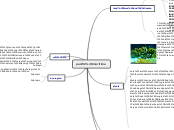pacific maritime
land form and climate
The Coast Mountains dominate most of the ecozone rising steeply from the fiords and deep channels that line the Pacific coast. Glaciers and snowfields cap the tallest ranges. The ecozone includes Mount Waddington at 4 000 metres B.C.’s largesest mountain.The mountains of Vancouver Island and the Queen Charlotte Islands, although not nearly as high. make up in ruggedness what they lack in elevation. Igneous and sedimentary rocks lie beneath most of the area while fallen rocks and glacial deposits predominate on the surface.
In contrast with the mountains the Estevan Coastal Plain is a long narrow strip of rocky coastline dotted by the occasional beach. Found only along the west coast of Vancouver Island, this unique landscape is constantly changing as it bears the full brunt of the Pacific's ceaseless waves and scouring winds.
This ecozone has some of the warmest and wettest weather in Canada. Its maritime climate receives as little as 600 mm of precipitation per year in the lower Georgia Strait, while the area to the north is typically much wetter, receiving up to 3 000 mm. Compared to the rest of Canada, there is little variation in monthly temperatures. Averages in July range between 12 and 350f and, in January, between 4 and 140f.
Subtopic
plants

here are some of the plants that there are in the pacific maritime
Western hemlock
Red alder
Yellow cedar (cypress)
Sitka spruce
Sword fen
Skunk cabbage
Salmonberry
Devil's club
Pacific dogwood
Western bleeding heart
Salal
Kelp bed
Douglas fir
Red huckleberry
Bracket fungus
Red cedar
Old man's beard
Red elderberry
Moss
Calypso orchid
Viola langsdorfii
human activity
the main topic i focused on was over fishing this is a problem because there are species going extinct also the fisherman are polluting the ocean
Although the Pacific Maritime ecozone is rich in wild fauna, flora, and ecosystems, much of the south is heavily stressed by population growth, urban development, and the forestry and pulp and paper industries.
wild life
bald eagle, glaucous winged gull,black bear,tree snail,Black tailed deer,winter wren,American black oystercatcher,
Harlequin ducks, Sea stars, Northern saw-whet owl,Gulls in large group, indicative of salmon attacking "ball-up" of herrSteller's jayPelagic cormorant
Northern sea lion
Subtopic
ecoregion
Subtopic
Subtopic
